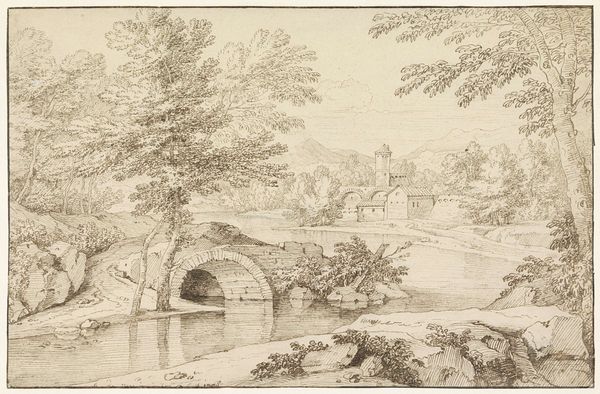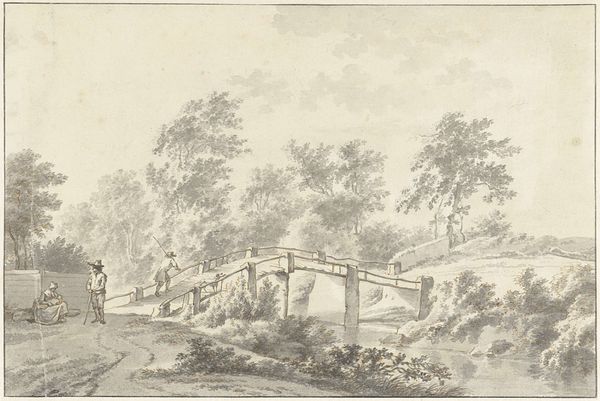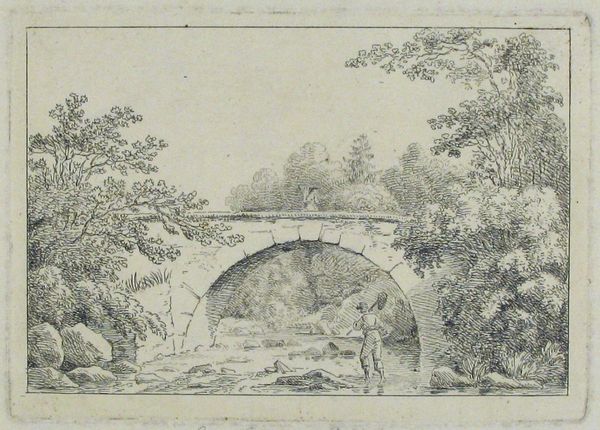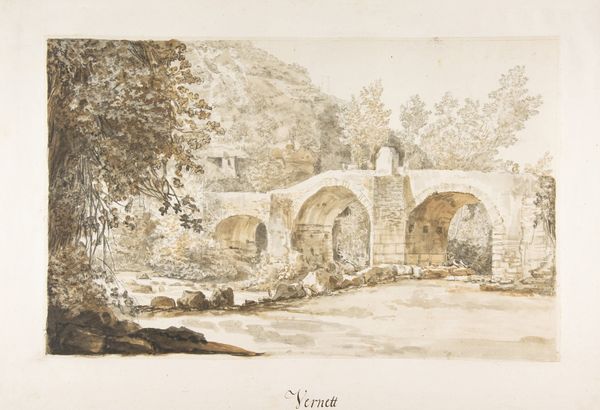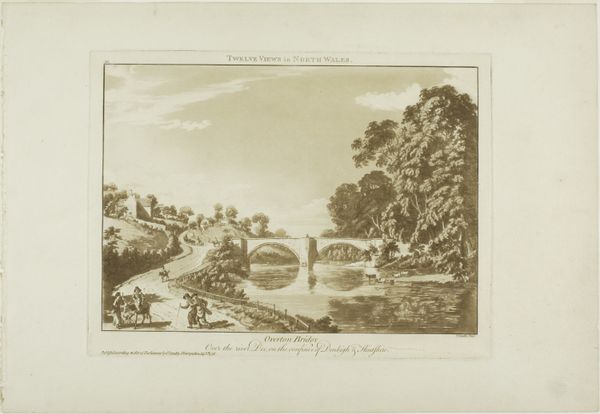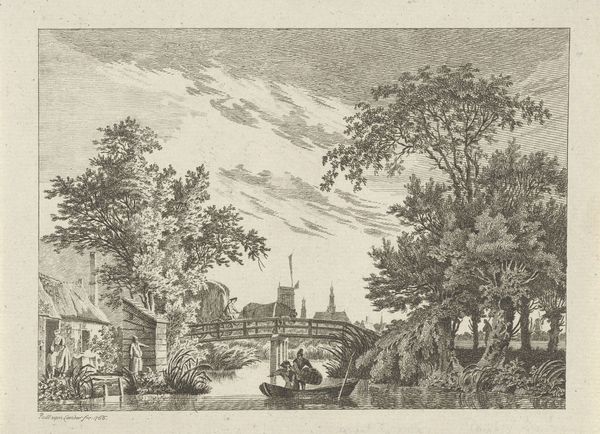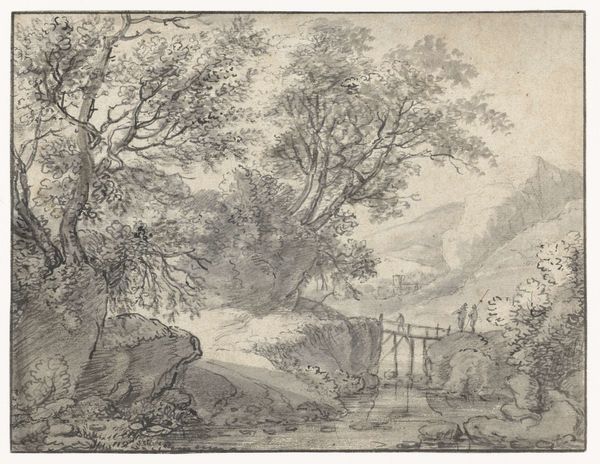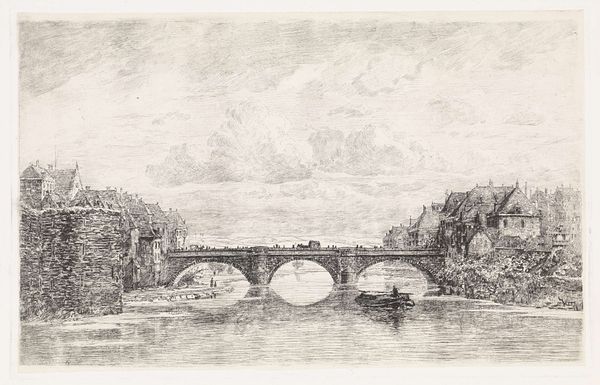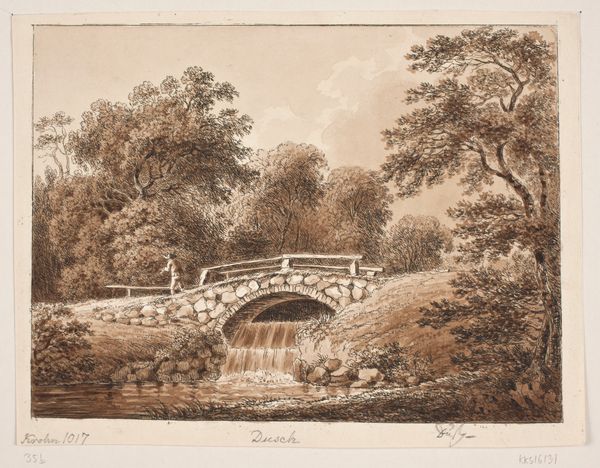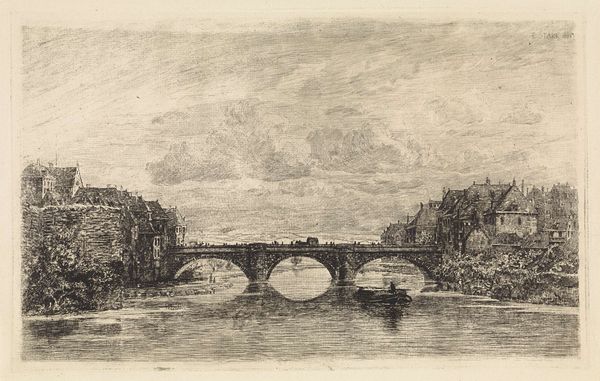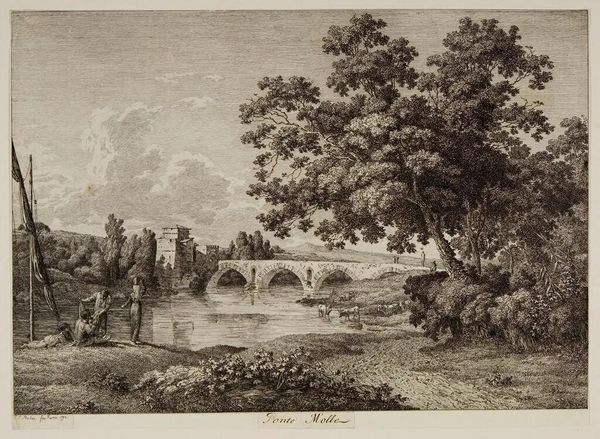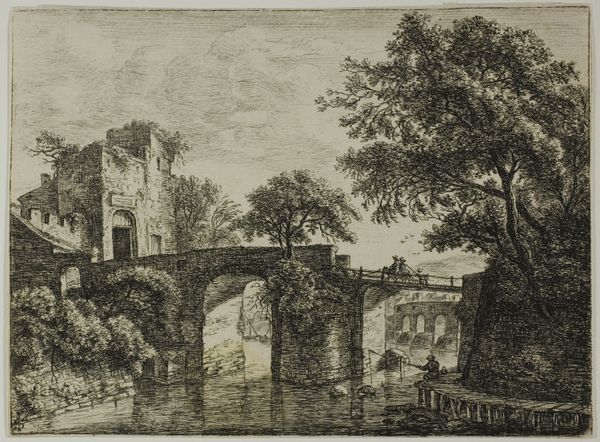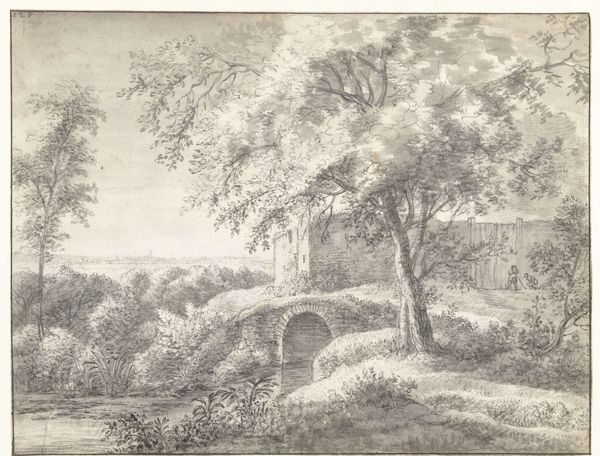
drawing, ink
#
drawing
#
landscape
#
ink
#
romanticism
#
cityscape
Dimensions: height 349 mm, width 453 mm
Copyright: Rijks Museum: Open Domain
Curator: Looking at this drawing, I immediately feel transported to a quieter, perhaps more reflective time. The landscape breathes a sense of solitude. Editor: It's true, there is an appealing, meditative quality here. We are observing “The Bridge over the Tiber at Narni in the Roman Campagna," a work on paper using ink, by Daniël Dupré, and dated between 1761 and 1817. It seems he captured an idyllic, timeless view of the Italian countryside. Curator: Absolutely. Beyond its picturesque beauty, this vista reveals a subtle interplay between structure and nature. The Roman bridge acts as a solid, unwavering figure amidst the fluid landscape. The enduring architecture in concert with organic naturalism. It has the symbolic weight of history combined with Romanticism's idealisation of nature. Editor: Romanticism is a very good shout for this artwork. I suppose, from a social perspective, this image provided a way for audiences in burgeoning industrial centers to connect with the past, or perhaps dream of a pastoral world untouched by urban life. Bridges also present a kind of symbolism, don't they? Transition? Access? What do they suggest to you in this scene? Curator: Well, bridges universally offer passage from one point to another – physically and metaphorically they facilitate connections. This bridge speaks of resilience, both culturally, bridging time, and materially. Editor: I think what resonates most with me is Dupré's capacity to elicit a narrative sense, an engagement with cultural memory using such minimal tones and rendering of forms. I think of 18th century travelers visiting this very scene and finding a validation of history lessons they were taught in the schoolroom. Curator: Yes, it truly captures an idealized journey in time, doesn't it? The artist invites us to pause, cross that bridge and reflect on what lies behind and what's coming. Editor: It makes you realize how the act of seeing historic landscapes is itself, shaped by the social forces of image making.
Comments
No comments
Be the first to comment and join the conversation on the ultimate creative platform.
